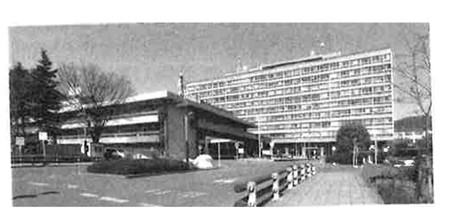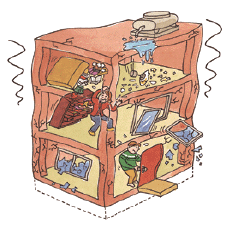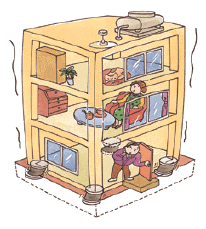Primer of Seismic Isolation “SI”
“Seismic Isolation” is a method of protecting a building from major earthquakes.
“Isolators” are installed between a building and ground to reduce vibrations that transmit to a building.
It is as if the building were in a condition of floating in the air above the ground.
This building is a called a seismically isolated building.
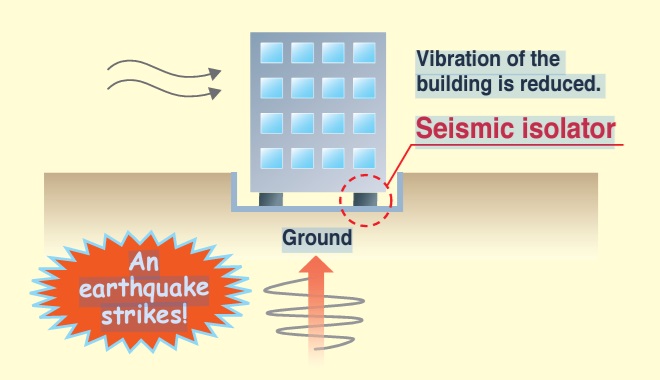
Principle of Seismic Isolation
Principle of Seismic Isolation for buildings (Draft)
This brochure shows principle, concept, analysis of SI for buildings.
What is the system of Seismic Isolation ?
The following animations show the properties of buildings during earthquakes.

Simulation vehicle for shaking of building during earthquakes
Simulation vehicle is installed seismic isolation system and generating system of earthquake ground motions. The video of the right side shows shaking situation of conventional building during the Kobe earthquake, the video of the left side shows shaking situation of seismically-isolated building during the same earthquake. The difference of shaking is significant, especially reduction of severe shaking is recognized in case of seismic isolation.
SI Devices
Generally, isolators and dampers are used. There are three types of isolators as shown below.
Isolator
▶ Elastomeric Isolator
It consists of steel and rubber, it made of sandwiches of soft rubber sheets and hard steel plates as shown in the Photograph. It works as a bearing to sustain the weight of the building and is able to move the building laterally. Soft rubber reduces the building vibration to slow shaking, and hard steel plate contributes to sustain the weight of building.

▶ Slider
The slider has a coating of PTFE and a stainless steel plate finished with smooth surface as a mirror in the Photograph. It works as bearing to sustain the weight of the building and is able to move the building laterally on the surface of the plate with a certain amount of friction.
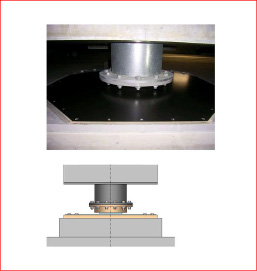
▶ Rotating Ball Bearing
It consists of ball bearings with retainers and rails or plates as shown in the Photograph. It works as a bearing to sustain the weight of the building and is able to move the building laterally without friction.

▶FPS(Friction Pendulum System)
This seismic isolation device utilizes the principle of a pendulum to slowly and greatly absorb the energy of shaking caused by earthquakes. A distinctive feature is that the natural period of the seismic isolation layer is not affected by the weight of the building itself.
Stainless steel sliding plates are integrated into the upper and lower concave plates, which are made by processing thick steel into a spherical shape. A slider with a sliding material attached placed between them moves like a pendulum, absorbing the seismic energy and returning the building to its original position.

Damper
Usually for a damper is used to suppress vibration, damper is used usually.
Mainly three types of dampers are used as follows;
▶Steel damper
It utilizes the elasto-plasticity property of steel.
The hysteretic loop contributes to energy dissipation. There are two types of steel dampers, one is square in section and other is round in section of the rods as shown in the Photograph.
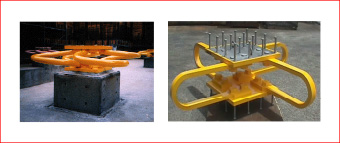
▶ Lead damper
It utilizes the plasticity property of lead. The hysteretic loop contributes to energy dissipation. There are two types of lead dampers, one has a round section and a curved shape as shown in the Photograph and other has a cylindrical plug in core of the elastomeric isolator.
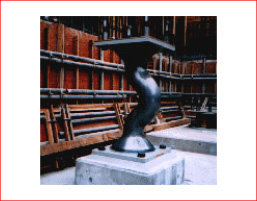
▶ Oil damper
It utilizes the viscous property of fluid. Oil or silicon are used as the fluid. Viscous resistance contributes to energy dissipation. Oil damper is a cylindrical shape as shown in the Photograph.
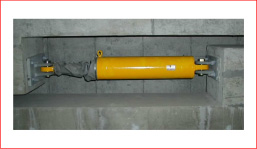
▶ RDT (Rotary Damping Tube), Viscous damper with amplifying mechanism
The "damping top" damping device with an amplification mechanism is a damping device consisting of an amplification section that uses a ball screw, which is widely used in industrial machinery, and a damping section that contains a rotating cylinder and has a gap filled with a viscous material.
The linear motion generated by the displacement of the building is converted into rotational motion whose velocity is amplified by the ball screw, and a large damping force is exerted by the viscous resistance that occurs between the rotor and the outer cylinder of the damping section, which is filled with a viscous material.

Primer of Vibration Control "VC"
What is the system of Vibration Control?
Vibration control is a method of protecting buildings from major earthquakes.
"Vibration control devices" are installed in a building to reduce the shaking of the building.
In an ordinary building, the energy of an earthquake is transmitted directly to the building, causing it to sway significantly. Absorbing some of the energy of an earthquake, which reduces the shaking of the building.

VC devices
Family of Vibration Control Devices
▶ Metal-based Vibration Control Devices
As the metal deforms, it absorbs and dissipates seismic energy by converting it into heat energy, thereby reducing building sway.
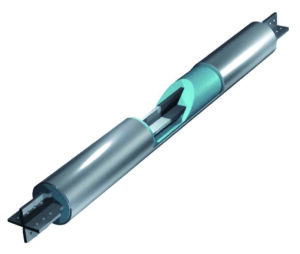
▶ Liquid-based Vibration Control Devices
Oil or other viscous materials injected into the device resist flow and absorb and dissipate seismic energy by converting it into thermal energy, thereby reducing building sway.
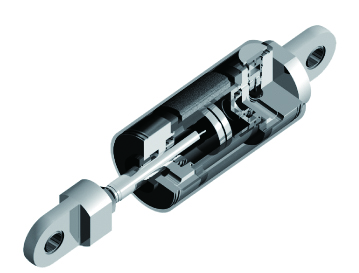
▶ Vibration Control Devices Using Soft Materials
By installing soft materials such as rubber inside the vibration control device, the soft(viscoelastic) materials deform greatly during an earthquake, absorbing and dissipating seismic energy by converting it into heat energy, thereby reducing building shaking.
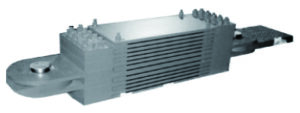
▶ Friction-based Vibration Control Device
Friction materials such as metal and sliding materials are tightened together to reduce building sway by absorbing and dissipating seismic energy by converting it into thermal energy through the frictional force generated when the materials move.
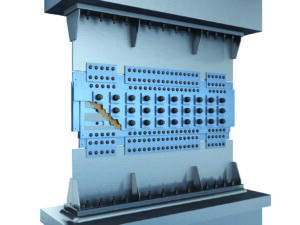
Types of Installation
▶Brace type

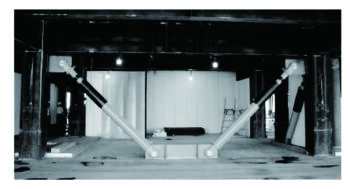
▶Wall type

▶Stud type
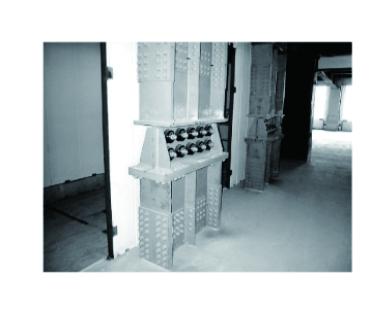
Various types of SI&VC Application Examples
This information corner provides the various types of SI&VC Application Examples.
▶The Past Thirty Years and the Future of Seismic Isolation Structures

Core-suspended seismic isolation structure
(Shimizu Corporation Safety & Security Center, 2006)
▶ZEB Demonstration Building in Taisei Technology Center

▶SI Retrofitting of Buildings of the Nagano Prefectural Government
